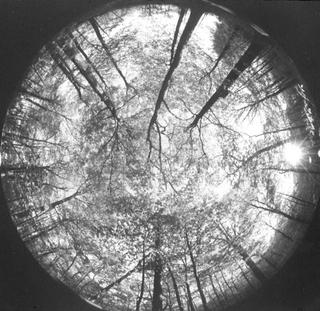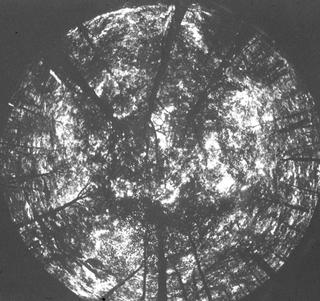The Flowers' Perspective
When I used to lead nature walks back in Iowa, I tried to get my "audience" to imagine the perspective of a wildflower on the forest floor. Even on a sunny day, we might be walking around in jackets and feeling the chill of the wind, but I'd drop down to the ground and and lay an outstretched hand across the leaf litter of the forest and ask other people to do the same. We could feel the sun "burning" the backs of our hands and we could feel the heat rising up from the dead dry leaves beneath our palms. Beneath the wind, the forest floor felt surprisingly warm. The sun beat down with an amazing intensity.
Plants need the energy from sunlight to develop, reproduce, and (if perennial) store food for the following year. Plants that thrive on the forest floor have only a small window of opportunity for growth between the frosty cold days of winter and the hot shady days of summer.
As part of my graduate research project in ecology, I was required to do more than just "imagine" the perspective of a wildflower. After all, I was training to become a SCIENTIST, so I was required to collect DATA--preferably something that could be quantified and, better yet, plotted in a graph!
So each week from March through May, I went out to 12 different locations in the forest where I was studying pollination and seed production in spring beauties (Claytonia virginica). At each site, I set up a fisheye lens (perfectly level) so that I could record and quantify changes in sunlight throughout the season. The fisheye lens captures the view across all horizons, showing which portions of the sky allow light to pass through, and which portions of the sky do not. Using a digitizer, I was able to measure the area of unobstructed sky overhead. But you don't need a fancy computer to see the changes!
 Even a mere glimpse of three fisheye photos is enough to show that the sunlight decreases dramatically as the season progresses. Early in the spring (March 7, 1987), only bare branches of trees and shrubs, as well as nearby hills, block the light of the sun. For the most part, a wildflower “sees” sunshine all day long, from sunrise until sunset.
Even a mere glimpse of three fisheye photos is enough to show that the sunlight decreases dramatically as the season progresses. Early in the spring (March 7, 1987), only bare branches of trees and shrubs, as well as nearby hills, block the light of the sun. For the most part, a wildflower “sees” sunshine all day long, from sunrise until sunset.
 As the season progresses (April 25, 1987), leaves develop overhead, casting larger and larger shadows as they grow. The forest floor becomes speckled with shade and sun that moves across the forest floor as the sun moves across the sky. Around this time, many of the early spring perenials are well into the process of making seeds and storing energy for the following year. Time is running out surprisingly fast.
As the season progresses (April 25, 1987), leaves develop overhead, casting larger and larger shadows as they grow. The forest floor becomes speckled with shade and sun that moves across the forest floor as the sun moves across the sky. Around this time, many of the early spring perenials are well into the process of making seeds and storing energy for the following year. Time is running out surprisingly fast.
 Near the end of the season (May 12, 1987), especially after a few days of constant rain, the leaves fill in rapidly allowing very little light to pass through to the forest floor. At this time, the ephemeral spring perennials undergo senescence and remain dormant until the following spring—when temperatures rise sufficiently to begin the cycle all over again. With any luck, many of the seeds reached maturity and will be dispersed across the forest floor.
Near the end of the season (May 12, 1987), especially after a few days of constant rain, the leaves fill in rapidly allowing very little light to pass through to the forest floor. At this time, the ephemeral spring perennials undergo senescence and remain dormant until the following spring—when temperatures rise sufficiently to begin the cycle all over again. With any luck, many of the seeds reached maturity and will be dispersed across the forest floor.
Plants need the energy from sunlight to develop, reproduce, and (if perennial) store food for the following year. Plants that thrive on the forest floor have only a small window of opportunity for growth between the frosty cold days of winter and the hot shady days of summer.
As part of my graduate research project in ecology, I was required to do more than just "imagine" the perspective of a wildflower. After all, I was training to become a SCIENTIST, so I was required to collect DATA--preferably something that could be quantified and, better yet, plotted in a graph!
So each week from March through May, I went out to 12 different locations in the forest where I was studying pollination and seed production in spring beauties (Claytonia virginica). At each site, I set up a fisheye lens (perfectly level) so that I could record and quantify changes in sunlight throughout the season. The fisheye lens captures the view across all horizons, showing which portions of the sky allow light to pass through, and which portions of the sky do not. Using a digitizer, I was able to measure the area of unobstructed sky overhead. But you don't need a fancy computer to see the changes!
 Even a mere glimpse of three fisheye photos is enough to show that the sunlight decreases dramatically as the season progresses. Early in the spring (March 7, 1987), only bare branches of trees and shrubs, as well as nearby hills, block the light of the sun. For the most part, a wildflower “sees” sunshine all day long, from sunrise until sunset.
Even a mere glimpse of three fisheye photos is enough to show that the sunlight decreases dramatically as the season progresses. Early in the spring (March 7, 1987), only bare branches of trees and shrubs, as well as nearby hills, block the light of the sun. For the most part, a wildflower “sees” sunshine all day long, from sunrise until sunset. As the season progresses (April 25, 1987), leaves develop overhead, casting larger and larger shadows as they grow. The forest floor becomes speckled with shade and sun that moves across the forest floor as the sun moves across the sky. Around this time, many of the early spring perenials are well into the process of making seeds and storing energy for the following year. Time is running out surprisingly fast.
As the season progresses (April 25, 1987), leaves develop overhead, casting larger and larger shadows as they grow. The forest floor becomes speckled with shade and sun that moves across the forest floor as the sun moves across the sky. Around this time, many of the early spring perenials are well into the process of making seeds and storing energy for the following year. Time is running out surprisingly fast. Near the end of the season (May 12, 1987), especially after a few days of constant rain, the leaves fill in rapidly allowing very little light to pass through to the forest floor. At this time, the ephemeral spring perennials undergo senescence and remain dormant until the following spring—when temperatures rise sufficiently to begin the cycle all over again. With any luck, many of the seeds reached maturity and will be dispersed across the forest floor.
Near the end of the season (May 12, 1987), especially after a few days of constant rain, the leaves fill in rapidly allowing very little light to pass through to the forest floor. At this time, the ephemeral spring perennials undergo senescence and remain dormant until the following spring—when temperatures rise sufficiently to begin the cycle all over again. With any luck, many of the seeds reached maturity and will be dispersed across the forest floor.


0 Comments:
Post a Comment
<< Home